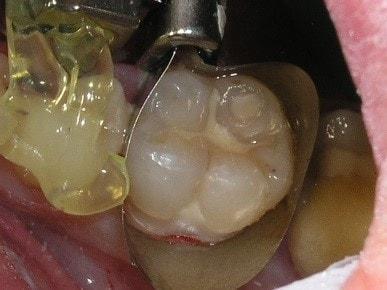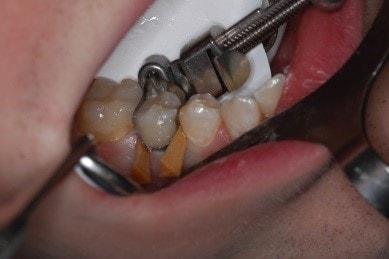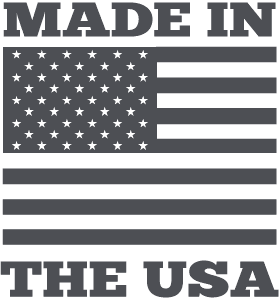FAQ
How can a Greater Curve band set up isolate a sub gingival Class V prep?
The Greater Curve band is fully seated past the buccal prep margin. Due to intrinsic flare of the GC band, there is ample access. If additional access is needed, the band can be cut back to provide even more access.
Below is an example of a Class V on the buccal of #30. Retainer is placed on the lingual and the band is fully seated past the prep margin. There is plenty of room for placing the composite.
The key: excellent isolation = a well-sealed composite.



GC band cut back with a carbide or diamond to provide additional access to the prep



-

Cutting away the contact seems “so wrong”, won’t I damage the adjacent tooth?
In dental school we were indoctrinated with an absolute fact: Interproximal enamel is very sacred and should not be touched. However, interproximal enamel is no different than any other enamel. Once you get over the unfamiliarity of exposing the contact, you realize that you are over thinking it. Simply burnish the matrix against the contiguous tooth and an outline of the adjacent contact becomes apparent. Make your opening within the confines of the outline, it doesn’t have to be exact.
The bond through the opening is small and to a smooth surface. It will break cleanly.
Advantages are:
1) Restoring the tooth in a neutral position. No need to wedge and force teeth apart. The wedge gets in the way of creating a rounded emergence contour.
2) Superior isolation and visibility.
3) Tight contacts assured, including MOD’s.
4) For Class III and Class IV’s contour is burnished into the matrix resulting in a firm rounded surface for condensing composite. (Mylar strips and wedges create flat emergence contours and black triangles.)
-

The composite must bond to the contiguous tooth through the contact opening. Will that no make it impossible to remove the band and affect the quality of the contact?
The composite does bond to the other tooth. However, the bond is weak for 2 reasons: 1) the bond is through a small oval and 2) the bond is to a smooth surface. It can be easily broken by torqueing a bladed instrument and a CeriSaw works well to further smooth the contact.
Follow the example below on removing the GC band.
-

How big do you make the contact opening?
The contact surface of the adjacent tooth dictates the size of the opening. You create a contact that mirror images the available contact surface of the adjacent tooth. This way you can make a contact that has both width and depth. When you run an explorer tip from the edge of the opening onto the adjacent tooth, you will not feel the transition from metal to tooth. Keep the opening small so there are no gaps around the opening. This technique works very well for Class IV's. In this case, the contact opening will be more vertical. You will be able to place the base of the contact where you want. Mylar strips and wedges create "black triangles". With the Greater Curve you be able to burnish in a rounded emergence contour.





Connect